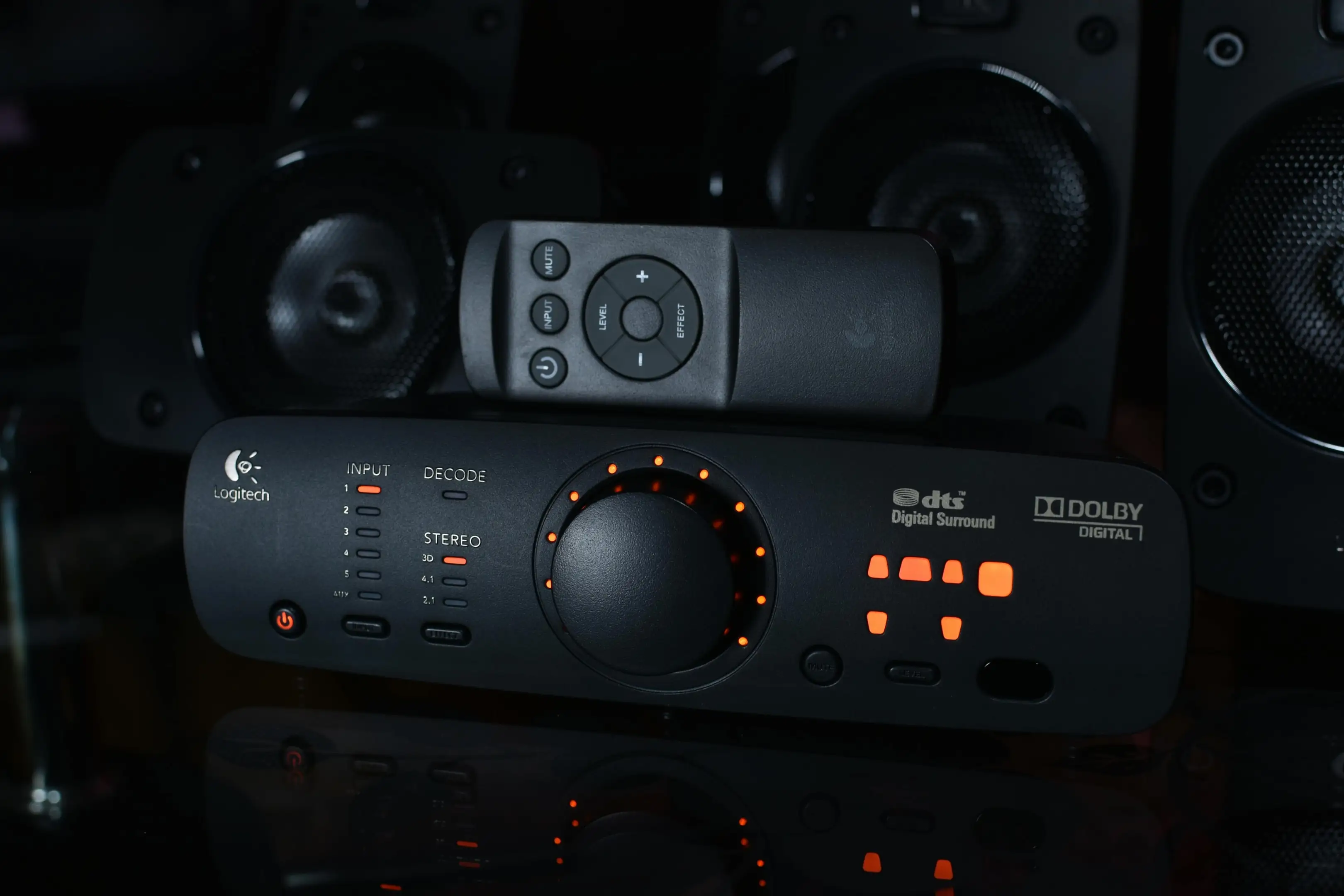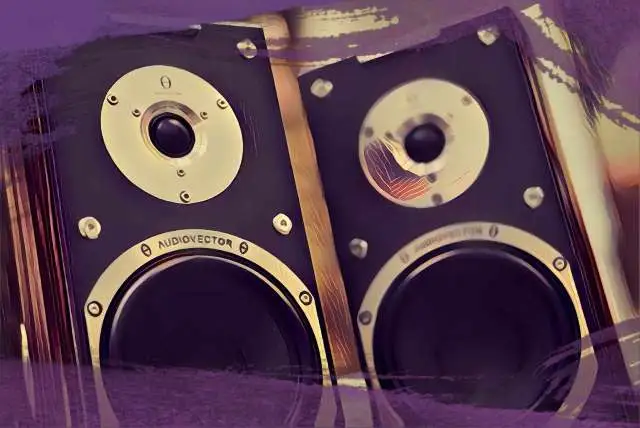When we listen to a song, we're either experiencing it in one channel (mono), or two channels (stereo). However, as listening experiences have evolved over the past decade, the way we design audio is shifting in tandem. Today, we can point to several common audio experiences that expand beyond a typical stereophonic sound: enter the world of immersive, multichannel audio.
Below, we'll dive into everything you need to know about multichannel audio technology so that you can create and experience captivating auditory soundscapes.
What is Multichannel Audio?
When you prepare a traditional song, you might notice that audio is typically spread across the left and right audio channels. When it comes to multichannel audio, you have more than two channels to play with, providing more possibilities in terms of where audio can be envisioned and ultimately, placed within a piece of media.
What's the Difference Between Stereo and Multichannel?
To put it plainly, stereo audio uses two channels, left and right. Multichannel uses more than two channels, so this could include left, right, middle, up, and down for example.
You're usually listening to stereo audio when wearing headphones, for instance, as the left headphone and right headphone each act as one channel. If you're listening to a surround sound audio mix, like watching a movie in a surround-sound fitted room, you might have audio coming from the sides of the room, the back of the room, and even from the ceiling of the theater.
Both stereo and multi channel audio are in contrast to mono audio, which just means that audio is coming out of a single channel versus multiple.
While less common in studio contexts today, mono mixes can still be heard fairly often in live performance settings or clubs where it may be difficult to create a consistent multichannel audio experience depending on where a listener is placed within a space.
Introduction to Multichannel Audio Technology
So what exactly is multichannel audio? Essentially, multichannel audio is any audio system that has more the two channels, or more channels than the traditional left and right stereo channels.
Multichannel audio is more common today than ever before as technology leans towards more immersive, hyperrealistic experiences. More audio channels allow for a more engaging listening experience, with sound coming from multiple directions.
One of the more common use cases of multichannel audio, that has been in practice for years, is the use of surround sound technology. This multi channel audio experience usually utilizes six or more channels, separating audio across the frequency spectrum over a physical space for enjoying movies, music and other media.
Today, you can find multi channel audio applications across gaming, cinema, virtual reality experiences, as well as the world of music production. Engineers are often specialized in multichannel audio to use these tools effectively, utilizing specialized suites like Dolby Atmos or similar to prepare file formats accordingly for these particular applications.

Types of Audio Systems
As discussed, a stereo audio system will feature two channels, or two speakers in terms of playback, with one side dedicated to the left side of the stereo field and one to the right. This means that the ideal placement for listening is in the center, equidistant between each of these left and right channels.
Multi channel audio systems have much more variation in terms of how they are set up and how many outputs are available. For instance, you're likely to come across several brands of multichannel audio setups like DTS:X and Dolby Atmos.
For a true surround sound 3D audio experience, it's common to use six channels which is listed as "5.1" with the "1" referring to the subwoofer of the audio system alongside 6 additional channels.
The number of audio channels can greatly affect your listening experience, as well as the listener's position. There are different types of surround sound systems like 7.1, which has two additional channels compared to the standard 5.1 setup.
Once you get into hi-fi audio territory, your listening experience can become as modular or detailed as you can afford. Generally, the more channels you have, the more volume, sound, and presumably detail you'll get, but going overboard within a confined space can work against you. It's all about designing and executing a multichannel audio setup that aligns properly with a space.
Audio File Management
When it comes to using multichannel audio, you can't necessarily handle it in the same way that you might approach stereo or mono audio.
For example, some consumer DAWs like Logic have begun integrating plugins that allow you to adjust spatial audio placement with the intention of crafting for surround sound.
However, this is certainly not standardized, and if you're interested in creating exclusively for multichannel audio, you'd be well-suited to find a specialized audio production house or similar that can help you understand the unique quirks of this relatively new territory.
More channels means more potential for error and potentially sound interference, so multichannel audio engineers and listeners alike must be diligent in their file and gear management to keep everything organized.
Each channel configuration needs to correspond with a custom audio track: For example, if you have a 5.1 surround sound set up, you'll need 6 tracks: 5 tracks assigned to various channels across the frequency spectrum, and one dedicated to the low sub woofer frequencies.

Benefits of Multi Channel Audio
So, what's the big deal with multi channel audio?
Perhaps the biggest benefit is that it provides a more detailed, potentially engaging listening experience, allowing consumers to hear art in ways they haven't experienced before. With more audio channels, you have more creative control within a mix and playback, which can be incredibly exciting for audio enthusiasts.
Multi channel audio shines in creating an immersive, escapist experience, which can enhance legacy media like movies and TV while paving the way to more modern mediums like VR experiences or streaming live events with more realism.

Technical Considerations: Software for Multichannel Audio Editing
Are you interested in giving multichannel audio editing a go? While it's best to find a way to watch a working professional level and edit multiple audio tracks for specialized applications in real-time, you can get a headstart by learning one of the following software suites:
Dolby Atmos
This is the most widely available and popular surround sound format, famously partnering with Apple Music to provide consumers with spatial audio within Apple Airpods. To edit multichannel audio for Dolby Atmos outputs, you can use compatible DAWs and tools like Steinberg's Nuendo, Logic Pro, or Pro Tools Ultimate.
DTS:X
The main difference between DTS:X and Dolby Atmos formats is that DTS is less compressed, meaning that you are getting slightly higher quality multichannel audio at the cost of larger files. To edit DTS:X multichannel audio, you can use the DTS:X Creator Suite to edit audio as needed.
Auro-3D
This surround sound alternative is less popular than Dolby Atmos and DTS:X but it's still worth mentioning. Some users claim that this surround sound field is particularly realistic, though you might find that it is less compatible with playback systems since it is a smaller company. Even so, Auro-3D offers a range of DAW-compatible plugins so that you can edit in this format if needed.
What is the Best Surround Sound Format?
Just like there isn't a "best" stereo audio format, there isn't necessarily a "best" surround sound format.
As a general rule of thumb, it's wise to preserve as much audio quality as you can without compromising playback speed. To determine the best format for any particular project, look to the guidance of your output playback device.
Dolby Atmos digital 5.1 surround sound might be the most common or standard, but that does not mean that this multichannel format is necessarily the best for every application.
For instance, even within the world of surround sound, there are several different iterations depending on a user's home theater setup. Work backwards and use the manufacturers output recommendations to come up with the ideal file format solutions while engineering. The technology we use shapes how we create and process audio.
What is the Difference Between Dolby Digital and PCM Multichannel?
Not all surround sound formats are built specifically for Dolby Atmos compatible gear, but a lot of gear is, so it's worth having an understanding of the common Dolby audio formats.
A good metaphor for Dolby Digital and PCM Multi channel audio is the difference between MP3s and WAV files: Dolby Digital audio files are a compressed version of PCM audio. PCM audio is higher quality, but playing it back in its pure, lossless format can lead to sync issues, especially when paired with visual media, so it's recommended that you opt for the format that's most compatible with your playback device of choice.
Multichannel Audio is Built for the Future
As our media becomes increasingly immersive, we're well-suited to find and curate audio channels and tracks to match.
Though fairly new, multichannel audio is just getting started: if you're an audio engineer or aspiring technician, it's a good idea to start reading up or experiencing some multichannel audio applications yourself as these new formats only stand to become more commonplace. Have fun exploring the evolution of audio in real-time!





